Putting Your Garden to Bed
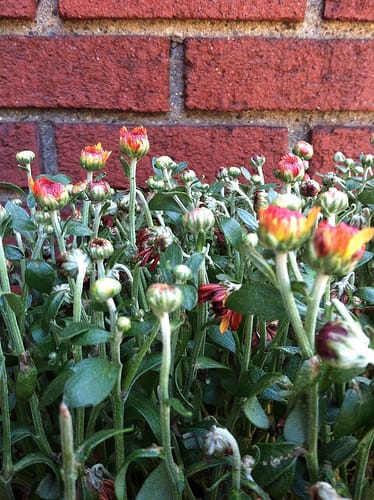

With the change in weather, how do you prepare your garden for the cold season ahead?
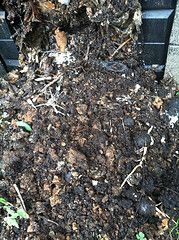
Prepare Soil for Next Year
The kind of garden you have informs how to prepare it for the fall. Gardens full of vegetables and annuals require different treatment than a perennial garden.
“If you have perennial plants that need to survive the winter, there’s a little more care necessary to protect them from the cold temperatures,” explains Ryan of the Brooklyn Seed Company. “But if you have mostly vegetables and annuals, you should make sure to do a good clean up, and if possible, add compost to the soil in the fall.”
Marie Viljoen, founder of Brooklyn gardening blog, 66 Square Feet instructed gardeners to “stop fertilizing the garden to allow plants to harden off before cold weather arrives.”
I asked about the difference between compost and fertilizer.
“Fertilizer gives plants a dose of nutrients which promote growth,” she explained. “Compost is excellent as mulch…and technically does fertilize. But very, very, very slowly, as it is quite low in nutrients compared to manufactured fertilizers.”
Cornell’s Cooperative Extension Service website explains that “vegetable production involves many practices that compromises soil health, and therefore limit productivity. New York solids are less forgiving of such practices than many other regions.”
Compost and mulch will slowly replenish the soil, but “the best recommendation is to plant a cover crop,” said Brooklyn Seed Company. “Cover crops are plants like alfalfa, winter rye, clover and some nitrogen fixing legumes that will actually grab nitrogen from the air and put it back in to the soil (pretty cool stuff!). They’re also known as ‘green manure’ because in the spring you can just turn them back into the soil and they decompose as a natural fertilizer.”
Pretty cool stuff indeed. Where can you buy cover crops? You can’t, not locally anyway.
There is still time for a second harvest of cold weather vegetables. Sowing seeds still isn’t out of the question though planting from starts, this late in the year, is more effective.
“Sow seeds for cold weather greens like mustards and kale, and even fava beans (for leaf harvest),” suggests Marie. “Parsnips can be planted now for late winter harvest.”
Plant Bulbs for Next Spring
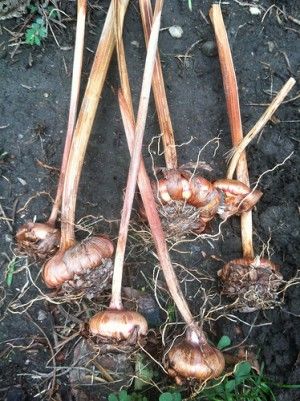
My friend brought me gladiolas and irises from her mother’s Pennsylvania garden, overflow to share.
“Plant the bulbs before the frost,” she said, “with the stem pointing in the direction you want the flower to bloom.” I’m looking forward to the blue and gold blossoms next spring.
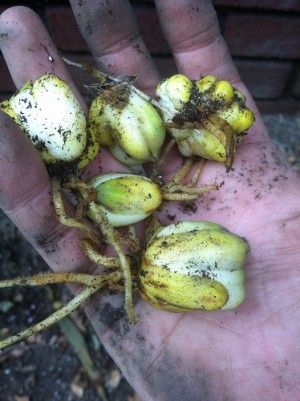
I have one lone white Easter lily, Lilium longiflorum, tucked near my hydrangea; a gift my husband brought home from Easter mass. I’m somewhat conflicted about perpetuating the growth of a nonnative plant — Easter lily is a Japanese native and forced in west coast greenhouses in time for Easter sales — yet I like lilies and want more. (Flatbush Gardener, please don’t judge.) Divide up the bulbs and replant.
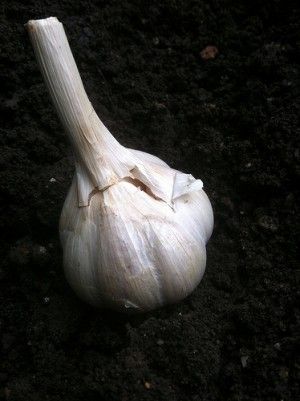
Brooklyn Seed Company recommends garlic to be planted before the first frost. I picked a bulb up from the farmers market, separated the cloves and stuck them in the ground. I have no idea what will happen but it will be fun to see if they pop their heads out of the soil next spring.
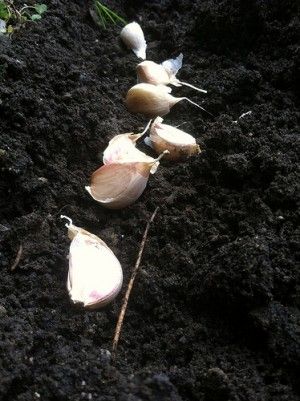
Do you have tips on preparing your garden for the winter?




